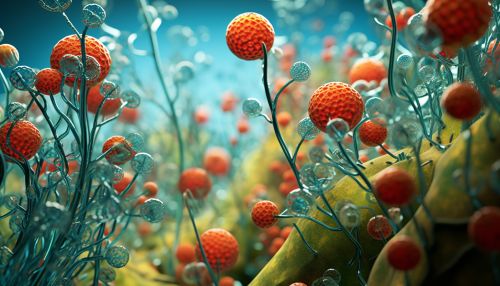Biological Mechanisms of Plant Stress Response
Introduction
Plants, as sessile organisms, are constantly exposed to a variety of environmental stresses. They have developed a range of physiological, biochemical, and molecular mechanisms to cope with these stresses. This article delves into the biological mechanisms of plant stress response, focusing on the expert-level information and specialized terms.


Types of Stress
Plants experience a variety of stresses, broadly categorized into biotic and abiotic stresses. Biotic stress is caused by living organisms such as pests, diseases, and competition from other plants. Abiotic stress, on the other hand, is caused by non-living factors such as drought, salinity, extreme temperatures, and nutrient deficiency.
Plant Stress Response
Plants respond to stress through a series of complex biological processes that involve changes at the molecular, cellular, and organismal levels. These responses are aimed at protecting the plant from damage, repairing any damage that has occurred, and enhancing the plant's ability to withstand future stress events.
Signal Perception and Transduction
The first step in the plant stress response is the perception of the stress signal. This is typically achieved through specialized proteins known as receptors, which can recognize specific stress signals and initiate a cascade of signal transduction events.


Gene Expression and Protein Synthesis
Once the stress signal has been perceived and transduced, it leads to changes in gene expression. Certain genes that are involved in stress response are upregulated, leading to the synthesis of stress-responsive proteins. These proteins play a crucial role in the plant's ability to cope with stress.
Physiological and Biochemical Changes
In response to stress, plants undergo a number of physiological and biochemical changes. These include changes in photosynthesis, respiration, transpiration, and nutrient uptake. Biochemical changes include the accumulation of compatible solutes, production of stress proteins, and activation of antioxidant defense systems.


Molecular Mechanisms of Stress Response
At the molecular level, plants respond to stress through a variety of mechanisms. These include the activation of stress-responsive genes, production of stress proteins, and changes in cellular metabolism.
Stress-Responsive Genes
Plants have a number of stress-responsive genes that are activated in response to stress. These genes encode for proteins that help the plant cope with stress. The expression of these genes is tightly regulated and is influenced by a variety of factors, including the type and severity of the stress.
Stress Proteins
Stress proteins, also known as heat shock proteins, are produced in response to stress. These proteins play a crucial role in protecting the plant from stress-induced damage. They function as molecular chaperones, helping to stabilize proteins and prevent their aggregation under stress conditions.


Changes in Cellular Metabolism
Stress also leads to changes in cellular metabolism. These changes are aimed at enhancing the plant's ability to cope with stress. They include the accumulation of compatible solutes, changes in energy metabolism, and activation of antioxidant defense systems.
Conclusion
Understanding the biological mechanisms of plant stress response is crucial for developing strategies to enhance plant stress tolerance. This knowledge can be used to develop new varieties of crops that are more resilient to stress, thereby helping to ensure food security in the face of increasing environmental challenges.
